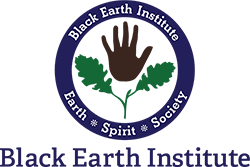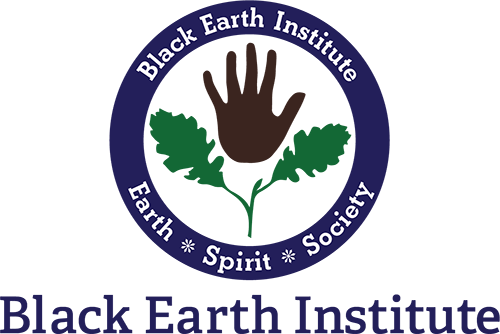
Seminar Notes #2
Contemporary Western scientific accounts of the peopling of the Americas have changed considerably in recent decades. Humans have been on this continent longer, had a vaster range of ecologies, and were more populous than was understood a generation ago. There have been, in other words, many ways to be denizens of these lands.
These newer scientific explanations may conform to a considerable degree with those provided by indigenous Americans accounts of their own origins on these lands. A laudable summary of this transformation in the relevant sciences is provided in Charles Mann’s 1491: New Revelations of the Americas before Columbus (2005). A more technical, though equally compelling account of some of this material is given in William Cronon’s Changes in the Land: Indians, Colonists and the Ecology of New England (1983) (optional reading).
Our class sampled literature both by Native American writers and about native populations from McKibben’s reader American Earth (2008). Extracts from George Catlin’s Letters and Notes on the North American Indians (1841), provides an intimate account of the relationship between “Indians” and buffalo. The account stresses the ecological aspects of these interactions. (Note, though, that the term “ecology” is anachronistic here since the term ecology was not coined until 1866 by the German biologist Ernst Haeckel.) Catlin’s rhapsodic descriptions of Indians and buffalo culminated in his proposal for the creation of a “magnificent park [where]… the world could see, for ages to come the native Indian in his classic attire….”. Note that in this way of framing things, the “whole world” seemingly does not include the Indians and the buffalo.
Though Catlin’s suggestion was compelling in some ways, it is nevertheless hard not to see this as patronizing and voyeuristic. Indeed, perhaps the suggestion of such a park where exposes the entire notion of a national park as a voyeuristic enterprise to begin with. The very idea of a national park suggests that the originary relationship we have with the land—that is, an intimate connection with, a dependence upon, a love of land, (all elements that have, arguably been lopped off in many contemporary views of land)—should now be set aside for posterity. A national park, from this perspective is a place where we gaze upon that which now seems remote, challenging, vertiginous, exciting of course, but not directly used. One may visit a national park, and if one becomes intimate with it, it is not a form of intimacy familiar to natives. A more adroit way of critiquing the idea of a national park, viewed through a similar lens can be found in Thomas H Birch’s superb essay “The Incarceration of Wildness: Wilderness Areas as Prisons” published in Environmental Ethics in 1990.
N Scott Momaday, a Kiowa novelist and essayist, takes up the question of the intimate relationship between native peoples and their land. In “A First American Views His Land” (National Geographic, 1976), Momaday describes this relationship as providing “an intimate vital link.” “The Indian,” Momaday writes “has been here a long time; he is at home here.” This concept of the earth as home—one that is also taken up by Linda Hogan in her essay “Dwellings” (1995)—may be an essential, though often neglected, theme in environmental thought and practice. The indissoluble link between native peoples and the land (home) is love according to Momaday’s account; to put it another way, love of the land is “integral in the Indian mind and spirit.”
There is a curious and perhaps easily overlooked moment in Momaday’s essay where he recalls a story that belongs to the oral tradition of his family. A woman was buried on the land east of his grandmother’s house. No one remembers, now, where she was buried. Momaday writes, “What matters here is the translation of the woman into the landscape, a translation particularly signified by means of the beautiful and distinctive dress, an Indian [italics in original] dress.”
This thought of Momaday’s, that land is made precious by what lies secret there, is taken up in various forms and by various peoples and in various traditions. For example, in Antoine de Saint-Exupéry The Little Prince (1943) a central element in the fox’s philosophy (a fox tamed by our prince) is that “what is essential is invisible to the eye.” In a later conversation between the Little Prince and the aviator—whose crash-landing in the desert is a central theme of the action of the book—the aviator reflected on his childhood home. “When I was a little boy,” the aviator reflected, “I lived in an old house, and legend told us that a treasure was buried there. To be sure, no one had ever known how to find it; perhaps no one had ever even looked for it. But it cast an enchantment over that house. My home was hiding a secret in the depths of its heart…”
Momaday presents us with one vision of a relationship with the land, a relationship that may be sustained by utility, that may be mediated by ownership and so on, but one that is based upon love. Momaday puts it like this, “You say that I use the land, and I reply yes, it is true; but it is not the first truth. The first truth is that I love the land; I see that it is beautiful; I delight in it; I am alive in it.”
What, then, is it, then, to love land, to be alive in it? Has the land, for many of us, lost that mystery? This, as we shall see in our later reading of Aldo Leopold, is central to his concern. Is the loss of connection with land, primarily an urban concern? My colleague Gavin van Horn, in his book The Way of Coyote: Shared Journeys in the Urban Wilds (2018), asks what an urban land ethic might be. Can love be sustained without mystery? If it is lost, can we get it back again?
Love is as variegated as the colors of flower; as the world becomes more homogenous do we lose models of how to care for the land? And there is now a major concern that we are losing these models; though the greater concern for those many peoples losing their lands, their languages and their cultures.
One metric of the loss of models of relationships with the land, is the loss of languages and cultures. According to the UN Department of Economic and Social Affairs, we are losing a vast number of cultures:
90 per cent of all languages will disappear within 100 years. It is usually estimated that there are between 6,000 and 7,000 oral languages in the world today. Most of these languages are spoken by very few people, while a handful of them are spoken by an overwhelming majority of the world. About 97 per cent of the world’s population speaks 4 per cent of its languages, while only 3 per cent speaks 96 per cent of them. A great majority of these languages are spoken by indigenous peoples, and many (if not most) of them are in danger of becoming extinct. Roughly 90 per cent of all existing languages may become extinct within the next 100 years.
In seeking to protect people, language, culture, and ways of being, how should any of us proceed? Presumably by creating “magnificent parks.”

